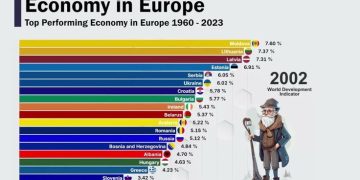Referring to the reasons for the recent decline in crude oil prices, Liu Shunchang, an analyst at South China Futures, said that it was mainly affected by factors such as the continued decline in geopolitical risks in the Middle East, the June 2 OPEC+ extension of production cut policy less than expected, the recent weakening of macroeconomic data in the United States and China and poor demand for refined oil products. Among them, the OPEC+ extension of production cut policy less than expected is the most important factor.
According to Liu Shunchang, on June 2, the OPEC+ meeting extended the production cut of 2.2 million barrels per day in the first half of the year to the third quarter, and said that starting from the fourth quarter, voluntary production cuts may be phased out. Previously, the market expected that the production cut would be extended to the end of this year, after the OPEC+ meeting, the market mentality and expectations changed, from the former concern about OPEC+ continued to exceed the expected production cut to support oil prices to when OPEC+ began to relax the production cut.
Du Bingqin, an analyst at Everbright Futures, believes that although OPEC+ has given the time point for each member country to gradually withdraw from the production cut plan from September this year to next year and the expected production of each member country, if the price of oil falls more than expected in the later period, OPEC+ may adjust the production cut plan at any time.
Zheshang Securities analyst Ren Yuchao agreed: “OPEC+ has a collective appeal to maintain high oil prices. In addition, the meeting also asked Iraq, Russia and Kazakhstan to begin in the near future to make further compensation for voluntary production cuts that were not implemented in the first half of the year, and overall, OPEC+ overall supply will contract further in the coming months.”

“However, the outcome of this OPEC+ meeting does reflect the organization’s intention to gradually abandon the production reduction insurance strategy to a certain extent and begin to focus on market share, so market expectations are relatively pessimistic.” Du Bingqin said.
Looking ahead to the future market, Liu Shunchang said that it is necessary to focus on the follow-up economic data of the United States, if the economic data of the United States continues the weak performance of nearly 1 month, oil prices will continue to face pressure. On the demand side, it is recommended to focus on the extent of the Northern Hemisphere consumption season.
Du Bingqin believes that the OPEC+ this round of production cut resolution basically keeps the fundamentals of the global crude oil market tight before the third quarter, but further upward oil prices also need to improve the actual demand. Recently, in the case of the opening of the northern Hemisphere summer demand season, last week’s US gasoline inventory data unexpectedly increased, and there was uncertainty on the demand side. It is suggested to pay more attention to the realization of overseas demand and China’s imported crude oil demand.
Wu Hai, a researcher at the Hongye Futures Financial Research Institute, said that considering that some member states can “gradually withdraw” from the voluntary production reduction plan, the new production reduction agreement actually leaves a lot of room for subsequent adjustments. Despite the risk of marginal deterioration in fundamentals, with oil prices above $70 / BBL in the fiscal balance of major producers, OPEC+ still has an incentive to keep prices relatively high. In the future, high-frequency data including refinery starts, product inventory levels and cracking spread changes can be watched.




































